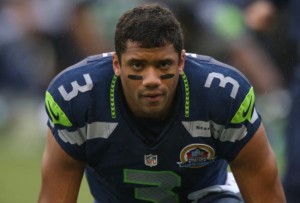Since 1940, there have been 616 times where a team rushed for at least 125 yards and completed at least 75% of its passes. On Sunday, when Washington pulled off that feat against the Texans, they became the first team to fail to score double digit points in the process.
In the second half, both RG3 and Niles Paul lost fumbles inside the Houston 10-yard line; that obviously contributed to the team failing to score more than 6 points. But Griffin’s 78.4% completion percentage was also pretty misleading. Griffin’s average throw went just 5.8 yards in the air, and his average completion covered just 3.9 yards before including his receiver’s yards gained after the catch. Both of those averages put ranked 30th among 32 qualifying passers. But while short throws can be part of an effective offense, on Sunday, that wasn’t the case for Washington. Consider:
- A 4th and 10 completion to Roy Helu for 6 yards
- A 3rd and 16 completion (on the Washington 15) to Helu for 9 yards
- A 3rd and 13 completion to DeSean Jackson for 0 yards
- A 2nd and 25 completion to Jackson for 0 yards
- A 2nd and 19 completion to Pierre Garcon for 3 yards
- A 2nd and 14 completion to Logal Paulsen for -3 yards
- A 2nd and 8 completion to Garcon for 3 yards
- A 2nd and 1 completion to Jackson for 0 yards
- Four 1st and 10 completions to Jordan Reed, Paulsen, Paul, and Darrel Young for 4, 3, 2, and 1 yard(s), respectively.
Sure, Griffin completed 29 of his 37 passes, but 12 of his completions did little or nothing to help his offense. He also was sacked three times. As a result, just 17 of his 40 dropbacks — or 42.5% — were successful completions.
To be fair, this isn’t as much a knock of Griffin as the Washington offense as a whole, or perhaps just a counter to those who like to rely on completion percentage or its brother, passer rating. If Griffin’s targets could have gained more yards after the catch, things would have looked a lot different. And against the frightening pass rush of J.J. Watt and company, [1]While Jadeveon Clowney went out early, Whitney Mercilus, Brooks Reed, and Brian Cushing all got to Griffin several times. short passes make some sense. But looking at Griffin’s completion percentage and concluding he had a good game is kind of silly. Again, more a knock on the misuse of statistics than the player.
Football Outsiders considers a completion that fails to gain a first down on 3rd or 4th down, a completion that fails to gain at least 60% of the distance needed on 2nd down, or a completion that fails to gain at least 45% of the needed yards on 1st down to all be failed completions. Those cut-offs seem reasonable enough to use for theses purposes. Looking at the numbers, Griffin led the NFL in failed completions in week one.
Here’s how to read the table below. In week 1, Griffin completed 29 of 37 passes, producing a completion percentage of 78.4%. However, 12 of his completions were failed completions, as identified above. That means 41.4% of his completions were failed completions. He also took 3 sacks; as a result, just 42.5% of his dropbacks were successful completions. The difference between his raw completion percentage and his SCmp/DB average was 35.9%. [continue reading…]
References
| ↑1 | While Jadeveon Clowney went out early, Whitney Mercilus, Brooks Reed, and Brian Cushing all got to Griffin several times. |
|---|

